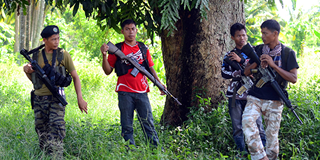Despite the multiple political transformations that the Philippines has undergone in the last half-century, the Moro Islamic Liberation Front has remained dogged in its pursuit of independence for the Bangsamoro nation. Only President Benigno Aquino III's bold, tenacious leadership could finally bring an end to the violence.
TOKYO – When the Moro Islamic Liberation Front guerrilla movement took up arms in the Philippines in the 1960’s, Ferdinand Marcos had yet to become the country's president – let alone dictator. Despite the country’s many political transformations in the last half-century, the MILF’s campaign to achieve independence for the Bangsamoro nation – whose territory, they claim, covers the islands of Mindanao, Palawan, Sulu, and Sabah – remained constant, until President Benigno Aquino III resolved to change it.
The MILF was not deterred by the popular overthrow of Marcos’s 20-year dictatorship in 1986, following the assassination of the opposition leader Benigno Aquino, Jr. Nor did the establishment of democracy – now deeply entrenched – inspire the group’s leaders to reconsider their approach. The MILF remained engaged in a brutal campaign of beheadings, assassination, kidnappings, and indiscriminate butchery.
Then, last January, Aquino managed to achieve a landmark deal that finally ended Mindanao’s agony. This is one of the most remarkable feats of peacemaking in Asia since World War II, and at least as worthy of international recognition as former Finnish President and 2008 Nobel Peace Prize laureate Marti Ahtissari’s role in brokering peace in Aceh, Indonesia, in 2005. In fact, given the myriad security and political risks that Aquino ran in concluding a peace deal with the MILF, he may be an even worthier Nobel laureate.

TOKYO – When the Moro Islamic Liberation Front guerrilla movement took up arms in the Philippines in the 1960’s, Ferdinand Marcos had yet to become the country's president – let alone dictator. Despite the country’s many political transformations in the last half-century, the MILF’s campaign to achieve independence for the Bangsamoro nation – whose territory, they claim, covers the islands of Mindanao, Palawan, Sulu, and Sabah – remained constant, until President Benigno Aquino III resolved to change it.
The MILF was not deterred by the popular overthrow of Marcos’s 20-year dictatorship in 1986, following the assassination of the opposition leader Benigno Aquino, Jr. Nor did the establishment of democracy – now deeply entrenched – inspire the group’s leaders to reconsider their approach. The MILF remained engaged in a brutal campaign of beheadings, assassination, kidnappings, and indiscriminate butchery.
Then, last January, Aquino managed to achieve a landmark deal that finally ended Mindanao’s agony. This is one of the most remarkable feats of peacemaking in Asia since World War II, and at least as worthy of international recognition as former Finnish President and 2008 Nobel Peace Prize laureate Marti Ahtissari’s role in brokering peace in Aceh, Indonesia, in 2005. In fact, given the myriad security and political risks that Aquino ran in concluding a peace deal with the MILF, he may be an even worthier Nobel laureate.